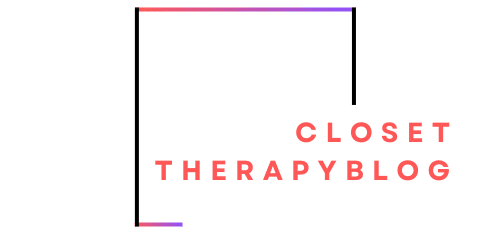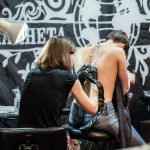Urbanization is rapidly increasing, and with it comes a host of environmental challenges. From the heat island effect to increased air pollution, urban areas are desperately in need of green solutions. One such solution is the green roof, a system that integrates plants and vegetation onto the roofs of buildings. But what exactly are the benefits of such a system? In this comprehensive guide, we will explore the myriad benefits that green roofs offer for urban homes, from heat reduction to water management and beyond.
The Green Solution to Urban Heat Islands
Urban heat island effect is a phenomenon where urban areas experience significantly higher temperatures than their rural surroundings, primarily due to human activities. The extensive use of concrete and asphalt, which absorb and radiate heat, along with the scarcity of green spaces, exacerbate this problem. Here’s where green roofs come into play.
A lire en complément : How to choose the right color scheme for a calming bedroom?
Green roofs, with their layers of plants and vegetation, can significantly reduce the urban heat island effect. The plants on these roofs absorb sunlight, reducing the amount of heat that is absorbed and reradiated by the building. This results in a cooler building and, by extension, a cooler city. As a result, green roofs help in saving on energy costs for air conditioning, making them a cost-effective solution for urban homes.
Improving Air Quality
Air quality is a significant concern in urban settings. The high concentration of pollutants can lead to a myriad of health problems. The good news is that green roofs can help alleviate this problem.
A découvrir également : What are the most efficient ways to heat a home?
Plants are natural air purifiers. Through the process of photosynthesis, they absorb carbon dioxide and other harmful pollutants while releasing oxygen. As part of a green roof system, these plants serve as a natural filter, improving the quality of the urban air you breathe. This benefit not only enhances the health of the residents but also contributes to a healthier urban environment.
Effective Water Management
Urban areas often face water management challenges due to their extensive hard surfaces. Rainwater runoff can lead to flooding, and in dry climates, water scarcity can become an issue.
Here, green roofs offer a compelling solution. They absorb and filter rainwater, reducing the pressure on the city’s drainage system and the risk of flooding. Furthermore, they also retain water which can be used to sustain the roof plants during dry periods. This not only helps in managing water resources but also brings down the water-related costs.
Energy Conservation
Green roofs function as excellent insulators, helping conserve energy in various ways. During the summer, the plants on the roof provide a cooling effect, reducing the need for air conditioning. In the winter, the green roof acts as an insulating layer, retaining heat within the building and reducing heating costs.
This energy conservation is not just beneficial for homeowners, looking for ways to reduce utility bills, but also for the environment. Lower energy consumption translates to a decrease in greenhouse gas emissions, contributing to efforts to combat climate change.
Intensive and Extensive Green Roofs
There are primarily two types of green roofs – intensive and extensive. Intensive green roofs are akin to rooftop gardens, requiring more upkeep but allowing for more design flexibility and usage. They can incorporate larger plants, trees, and even water features.
Extensive green roofs, on the other hand, are designed for low maintenance, with hardy plants that can survive with minimal care. These roofs are often not designed for regular foot traffic and are more focused on ecological benefits.
The Bottom Line: A Sustainable Urban Design
In conclusion, green roofs offer myriad benefits, from combating the urban heat island effect to improving air quality, conserving energy, and managing water. They are a practical and sustainable solution for urban homes, contributing to a healthier and greener city environment. While the initial costs of installation may be higher compared to traditional roofs, the long-term savings and benefits make green roofs a worthwhile investment.
In an era where sustainable design is not just a trend but a necessity, green roofs stand out as a viable solution. They not only transform urban homes into eco-friendly habitats but also contribute to the larger goal of sustainable urban living. As we continue to grapple with the effects of urbanization, green roofs present a beacon of hope and a step towards a greener future.
The Real Estate Impact of Green Roofs
A critical factor for urban homeowners to consider is the real estate impact of installing a green roof. Green roofs can potentially boost the property value of urban homes. According to various studies in the United States, properties with green spaces, such as green roofs, are generally valued higher than properties without.
Moreover, green roofs offer aesthetic benefits that can make urban homes more appealing. They transform a typically unused space into a lush, green area that provides a soothing, natural view. This added visual appeal, combined with the practical benefits green roofs provide, makes properties with these installations more attractive to potential buyers.
Furthermore, city ordinances and policies are increasingly encouraging, if not mandating, the use of green roofs in new constructions. In such scenarios, having a green roof could potentially become a selling point for urban homeowners in the near future.
However, it’s important to weigh these benefits against the cost of installing and maintaining a green roof. While the initial costs may be higher compared with conventional roofs, the long-term savings in energy costs, stormwater management, and potential increase in property value make it a sound investment.
The Practicalities of Installing a Green Roof
Before installing a green roof, homeowners need to consider several factors. For instance, the structural integrity of the building is crucial. It must be strong enough to support the weight of the green roof, which includes the growing medium, plants, and any water that the roof will hold.
Next, the type of green roof you choose, whether intensive green or extensive green, will have varying requirements. Intensive green roofs, resembling park-like settings, require regular maintenance, a thicker growing medium, and deeper roots to support larger plants. They are ideal for those who want a usable green space on their roof.
On the other hand, extensive green roofs are more low-profile, designed with native and drought-tolerant plants that require minimal maintenance. They’re suitable for those more interested in the ecological benefits green roofs provide than in using the roof as a garden.
Furthermore, the choice of plants for your green roof will also depend on the local climate and the amount of sunlight your roof gets.
Conclusion: Embracing Green Roofs for a Greener Future
In summary, green roofs offer a multitude of benefits for urban homes. They reduce the urban heat island effect, improve air quality, manage stormwater runoff, conserve energy, and potentially increase property values. With two main types, intensive green and extensive green, homeowners can choose a roof that best suits their needs and preferences.
While the initial investment might be higher than conventional roofs, the numerous benefits green roofs offer make them a worthwhile consideration. As more cities seek sustainable solutions to combat environmental challenges, green roofs are steadily gaining popularity.
In the face of rapid urbanization, embracing green roofs can be a significant step towards sustainable living. Not only do they transform urban homes into eco-friendly oases, but they also contribute to a healthier, greener urban environment. Looking ahead, green roofs seem poised to become an integral part of urban landscapes, signifying progress towards a sustainable future.
As urban homeowners, the choice to switch to a green roof is more than just a personal one; it’s a decision that positively impacts the wider community and the environment. After all, every green roof added to the urban landscape is a step towards a better, more sustainable world.











